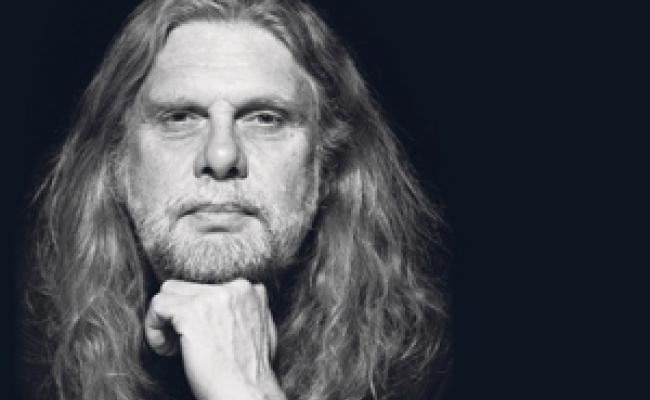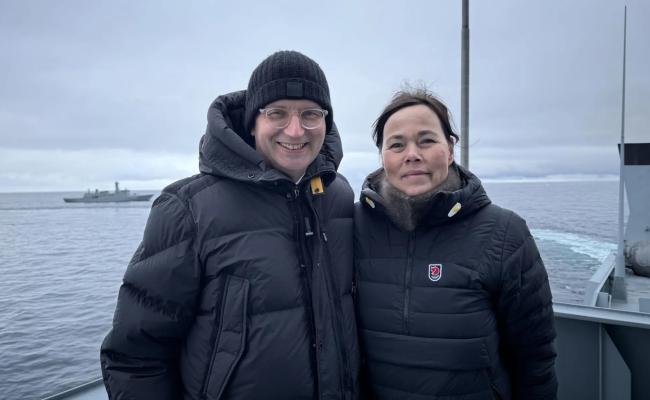Arctic Circle Assembly 2025: Arctic Security Expert: “Putin is Testing NATO”
P. Whitney Lackenbauer is the Network Lead at The North American and Arctic Defence and Security Network. He participated in several panels during Arctic Circle Assembly 2025, in Reykjavik. (Photo: Trine Jonassen)
Reykjavik (High North News): “It’s all a competition at this stage, designed to figure out what our tolerance is. We don't often project an image of strength that is really important when we're interacting with Russia and China”, says Canadian Defense Expert P. Whitney Lackenbauer.
To no surprise, NATO and security are again buzzwords at the Arctic Circle Assembly in Reykjavik this year.
As the assembly is both top-heavy and heavily decorated, it also gathers scientists and think tanks who actively take part in the open dialogue about security and the current situation.
One of these is P. Whitney Lackenbauer, who is the Network Lead at The North American and Arctic Defence and Security Network, as well as Canada Research Chair in the Study of the Canadian North.
Militarization
He says that we now actually have to talk about militarization within the Arctic region, although this is often miscast as the catalyst for conflict.
“And when I say conflict, I'm talking about kinetic-type conflict”.
Propensity for the Trump White House to turn on a dime.
“Not so long ago, we were all talking about the Trump NATO crisis. Is that over?”
“We all still need to maintain a certain level of wariness because we know that there's a propensity for the Trump White House to turn on a dime. But we do have reassuring signals that the U.S. is very much committed to NATO,” says the Canadian scientist to High North News.
Stepping up
Part of that is because NATO is stepping up.
“NATO is collectively showing that taking that responsibility and commitment to burden sharing has addressed a lot of those deep-seated frustrations, that the rest are freeloading. I hope that discourse is over with the 5% commitment, 3.5 plus 1.5 commitment.”
During a panel debate about NATO in the Arctic, Nicholas Glesby at The North American and Arctic Defence and Security Network, reminded the audience that Russia regularly tests the Alaska Air Defense Identification Zone with long-range heavy bombers.
From left: Postdoctoral Fellow Gabriella Gricius at the University of Konstanz, Doctoral Candidate Olivia Wynne Houck at the Massachusetts Institute of Technology, and P. Whitney Lackenbauer, Network Lead at The North American and Arctic Defence and Security Network, were all in a panel together to discuss NATO in the Arctic. (Foto: Trine Jonassen)
Hybrid warfare
NATO forces shot down Russian drones over Poland on September 10, responding to an incursion at a scale unprecedented since the start of Russia’s full-scale invasion of Ukraine in February 2022.
There were also Danish and Norwegian drone incidents as a series of unexplained remote aircraft observations reported between 22 and 28 September over Danish and Norwegian civilian airports and military installations.
“With drones, hybrid threats, Russian propaganda, and the cutting of cables. It can seem like NATO is willing to push the boundaries for Article 5, to avoid being the aggressor towards Russia?”
“That's the area where the danger of miscalculation or unintended escalation crossing over into kinetic warfare is very real. So far, NATO has shown a great deal of restraint. The question is whether we're deterring sufficiently these below the threshold of armed conflict activities by Russia, and at what point Russia will cross a red line. So, we need to be really clear in our messaging about what red lines are and actually hold on to that.”
The red line
“Where are the red lines, do you know?”
“They're too vague. The more clarity that NATO can bring, especially when it comes to activities that are very difficult to attribute or identify, is key right now. That is one of the most pressing questions of whether we are ready to declare red lines. And are we going to make sure that our credibility is backed by our willingness to act.”
Also read (the text continues)
“Who can answer that?”
“That's got to come from NATO, collectively and individually by member states that will have their own red lines. Which is their prerogative. Certainly, Poland has declared theirs, as have others. But we see these being tested, and with some of the recent drone activity representing intrusion into sovereign airspace, this is kind of the idea of where to draw the line on that type of activity.”
A test
Researcher Gabriella Gricius at the University of Konstanz doesn’t think that Finland and Sweden joining NATO has deterred Vladimir Putin from hybrid warfare.
“From a Russian perspective, it almost doesn't change that much, right? They knew that Finland and Sweden were closely aligned with NATO before. It's not really deterring them in terms of how they move forward with hybrid threats", she states.
“Is Putin making NATO look weak when they don't react?”
“That's the test. This is all competition at this stage, so all of it is designed to figure out what our tolerance is. And we have to be really careful that we're projecting an image of proportionate strength, that we're not the ones inadvertently escalating things. But at the same time, we need to show our collective resolve and strength. And sometimes, we tend to be very self-critical. We point to our vulnerabilities and gaps. We don't often project an image of strength that is really important when we're interacting with Russia and China", P. Whitney Lackenbauer says in closing.




